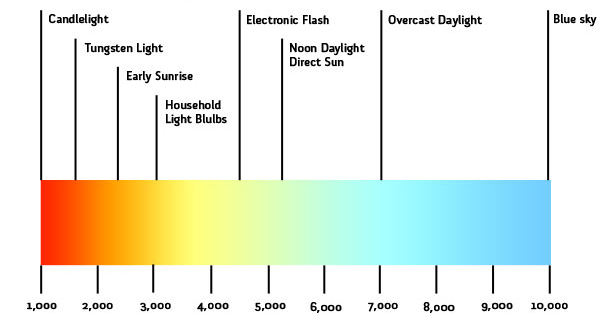Color Temperature

|
Color temperature, expressed on the Kelvin Scale (K), is the color appearance of the lamp itself and the light it produces. Imagine a block of steel that is steadily heated until it glows first orange, then yellow and so on until it becomes white hot. At any time during the heating, we could measure the temperature of the metal in Kelvins (Celsius + 273) and assign that value to the color being produced. This is the theoretical foundation behind color temperature. For incandescent lamps, the color temperature is a "true" value; for fluorescent and high-intensity discharge (HID) lamps, the value is approximate and is therefore called correlated color temperature. In the industry, color temperature and correlated color temperature are often used interchangeably. The color temperature of lamps makes them visually "warm," "neutral" or "cool" light sources. Generally speaking, the lower the temperature is, the warmer the source, and vice versa. It's important to remember this because it seems counterintuitive -- we want to believe that bluer light sources have a low or cooler color temperature, and that yellow light sources have a high or warmer color temperature, but the exact opposite is the case.Lamps with a lower color temperature (3500K or less) have a warm or red-yellow/orangish-white appearance.The light is saturated in red and orange wavelengths, bringing out warmer object colors such as red and orange more richly. |
Lamps with a mid-range color temperature (3500K to 4100K) have a neutral or white appearance. The light is more balanced in its color wavelengths. Lamps with a higher color temperature (4100K or higher) have a cool or bluish-white appearance. Summer sunlight at noon on a clear day has a very cool appearance at about 5500K. The light is saturated in green and blue wavelengths, bringing out cooler object colors such as green and blue more richly. The color characteristics of daylight, however, are variable, as in the early morning and late afternoon the light is warm in color appearance. Daylight is therefore a dynamic light source whose color qualities change throughout the day. The vast majority of electric light sources in the architectural market are considered white light; some are just a bit warmer or cooler than others. There are specialty lamps on the market that give off more saturated colors; the light source can be specified to emit light in a basic color. Fluorescent and incandescent lamps are available in red, blue, green and yellow (or gold). Metal halide lamps are available in blue, green, yellow and pink. -END- |
